Histamine Reactions and COPD
Allergens and histamines doing battle in your mucus membranes can be dangerous for COPD patients. They can stimulate mucus production as well as cause inflammation in the airways. Allergies, or histamine reactions are a nuisance to some but can mean a hospital visit for those with COPD.
Common Allergens
Everything from tree pollen, to certain foods, to household dust, can be allergens for certain people. The key to avoiding exacerbation and hospitalization is knowing your personal trigger and taking measures to avoid it.
Common airborne allergens are: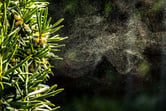
- Tree Pollen, from Oak, Hickory, Birch, Ash, Maple, etc.
- Mold
- Dust
- Pet dander
Food Allergens Include:
- Eggs
- Peanuts
- Soy
- Fish and shellfish
- Tree Nuts such as, Walnuts, Pecans, Almonds, etc.
Avoiding Danger
If you have a food allergy read up not just on the food itself but on any sauces or  dishes that might contain the allergen so that you will know what to avoid. Get in the habit of reading labels and recognizing alternate terminology for particular allergens. For instance if you see the word "emulsifier" that might mean there is egg or soy in the product. If you are in danger of anaphylaxis keep your epinephrine auto-injectors, or epi-pens with you at all times. Be sure that you and your loved ones know how to administer these properly.
dishes that might contain the allergen so that you will know what to avoid. Get in the habit of reading labels and recognizing alternate terminology for particular allergens. For instance if you see the word "emulsifier" that might mean there is egg or soy in the product. If you are in danger of anaphylaxis keep your epinephrine auto-injectors, or epi-pens with you at all times. Be sure that you and your loved ones know how to administer these properly.
As far as airborne allergens go, speak to your doctor about allergy shots or taking antihistamines daily. Follow doctors orders regarding prescriptions and begin taking them before allergy season begins for you so that they can prevent your body from releasing any histamines. In addition, take these precautions.
- Keep windows closed during allergy season.
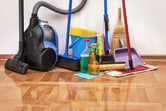
- Get a HEPA filter for your central air system.
- Wear a hat as hair will gather pollen when you're outdoors. Shampoo daily.
- Wear sunglasses to keep pollen out of your eyes.
- Wash bedding weekly to prevent accumulation of dust mites, pet dander, and other home allergens.
- Don't wear shoes in the house. They track in spores, mold, pollen, and other outdoor allergens.
- Use a clothes dryer to dry clothes and linens as opposed to hanging them outside to dry.
- Leave jackets or outdoor clothing in a closet or as far from common living areas as possible.
- Dust and mop often. Those with respiratory allergies should consider going with hardwood floors and tile instead of carpeting. Keep knickknacks to a minimum.
- Be sure not to over water house plants to avoid encouraging mold to grow.
- Clean the bathroom often to keep mildew away.
- Avoid outdoor activity until later in the day as pollen tends to be more active in the morning. Pollen's peak time is between 5AM and 10AM.
- Drive with your windows up.
- Consider leather furniture instead of upholstered. It's easy to clean with a damp cloth and doesn't hold dust, dander, or other allergens.
- Air out any new purchases before placing them in a bedroom or closed in space. Many items including clothing or electronics are treated with chemicals to keep them protected during the shipping process. These fumes can trigger an asthma attack or COPD exacerbation if care is not taken.
- Make sure your vacuum has a HEPA filter to ensure that it traps the dust you vacuumed up instead of reintroducing it back into the air.
- Fix leaks right away so mold doesn't grow in the basement or in cabinets.
Foods the Help Block Histamine Reactions
There are plenty of prescription as well as over-the-counter medication for allergies. In addition there are nutritional steps you can take to prevent or lessen allergies.
Foods that contain omega-3s have been known to decrease allergic reactions. Fatty fish are a great source of omega 3 nutrients.
- Trout
- Bluefish
- Tuna
- Salmon
- Sardines
- Herring
Foods that are rich in quercetin help to reduce inflammation that is thought to prevent immune cells from triggering a histamine response.
- Apples

- Cauliflower
- Onions
- Berries
There's no better all around, good for you, vitamin than vitamin C. It boosts your immune system and contains quercetin as well.
- Oranges
- Red and green peppers
- Tropical gruits
- Strawberries
- Black currant
Tree nuts can be an allergen but they also contain omega 3 fatty acids. Many are rich in magnesium also which opens and relaxes muscles easing asthma allergic reactions.
- Almonds
- Macadamias
- Walnuts
- Pecans
- Cashews
Garlic. Good for allergens as well as vampires! It is thought to block production or histamine inducing chemicals.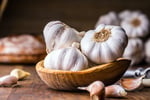
- Use it for seasoning in soup
- Sprinkle on chicken or beef
- Garlic bread with veggies
Yogurt or Kefir are probiotics that help reduce allergic reactions. Improving digestion reduces inflammation by decreasing the body's immune response to allergy triggers.
- Yummy as a desert with berries
- Use as a dip for veggies for a healthy snack
- Frozen yogurt or smoothies are a great way to cool off
Tumeric has become very popular in recent years for its anti-inflammatory properties.
- Make tea with it
- Toss some in your rice
- Blend it in a smoothie
- Use a pinch over your eggs
Ingesting limited amounts of local honey can help you develop immunity or at least decreased sensitivity to local pollen.
- Put some in your tea
- Drizzle some on your toast
- Use honey instead of jelly with peanut butter
Foods that Make Allergies Worse
Your best bet is to keep a food diary so that if you do have increased reactions you can look into which foods made you feel worse. Specific types of pollen contained in certain vegetables are likely to worsen symptoms if you have a sensitivity.
If you have ragweed allergies symptoms may worsen with,
watermelon, banana, cucumber, sunflower seeds, honeydew, or zucchini.
Those with a sensitivity to grass pollen should avoid,
celery, melon, coriander, potatoes, cereal grains, tomatoes, peaches , and coriander.
This applies to organic or fresh food for the most part. Processed or canned foods often cause no reaction.
Spicy foods can trigger sinus problems. Spicy foods often cause heartburn making acid come back up in the throat causing issues.
Alcohol can also trigger nasal congestion. A chilled glass of wine or cold beer on a sunny spring day is
As the chilly days of early spring melt into the sun drenched days of early summer, take these precautions to ensure you enjoy the most colorful season of the year without risking your health.

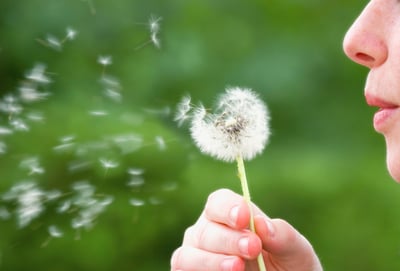
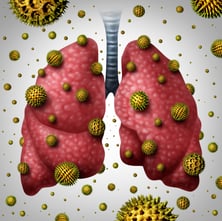 something that's irritating your system. Usually it's an allergen that your body reacts negatively to that triggers histamines to spring into action. If allergens enter your nose, histamines cause a sneeze. If they get in your eyes you're likely to tear up. If irritants land on your skin you are likely to develop an itch, or in more extreme cases, hives or a rash. Many times these triggers are actually harmless but your body is just perceiving them as a threat and sending histamines after them.
something that's irritating your system. Usually it's an allergen that your body reacts negatively to that triggers histamines to spring into action. If allergens enter your nose, histamines cause a sneeze. If they get in your eyes you're likely to tear up. If irritants land on your skin you are likely to develop an itch, or in more extreme cases, hives or a rash. Many times these triggers are actually harmless but your body is just perceiving them as a threat and sending histamines after them. 

